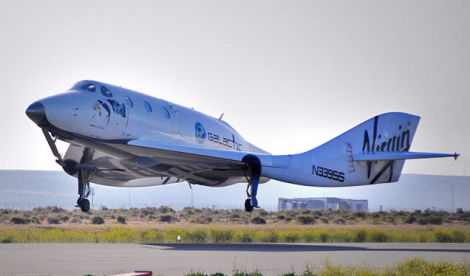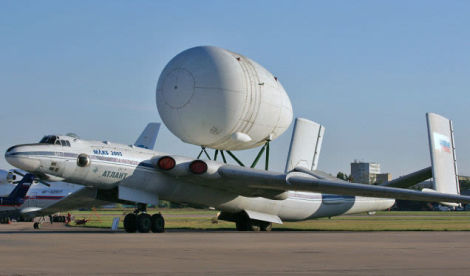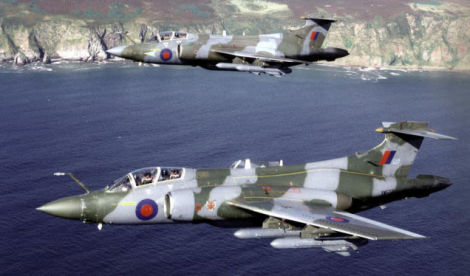Welcome to This Date in Aviation History, getting of you caught up on milestones, important historical events and people in aviation from April 29 through May 1.
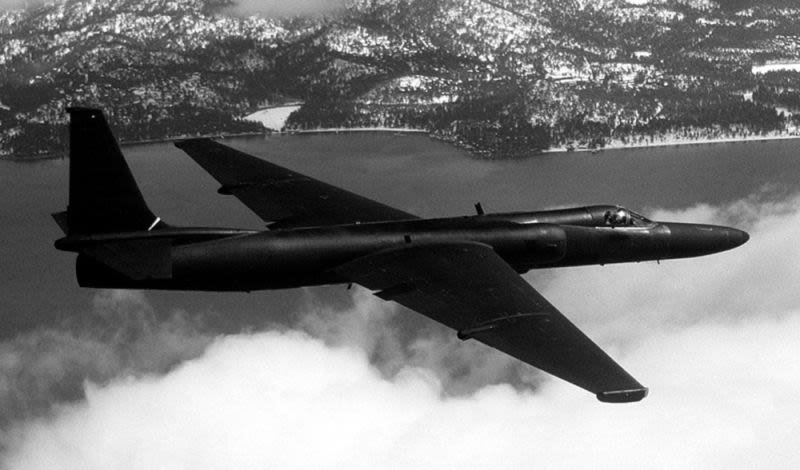
May 1, 1960 – Central Intelligence Agency pilot Francis Gary Powers is shot down over the Soviet Union. During the Cold War, the United States was desperate for timely, accurate intelligence on Soviet military activities. Today, that sort of information is gained by powerful satellites, but space-based reconnaissance was in its infancy in the 1960s. Not only was it unreliable, it was also not at all timely, since film had to be ejected from the orbiting satellites and returned to Earth for pickup, usually snatched from the air as it descended by parachute. It was not a foolproof system, and many rolls of film were lost. Closer to the ground, American reconnaissance planes had been probing the edges of the Soviet Union, but it was hazardous duty, and many planes and pilots were lost to Russian fighters.
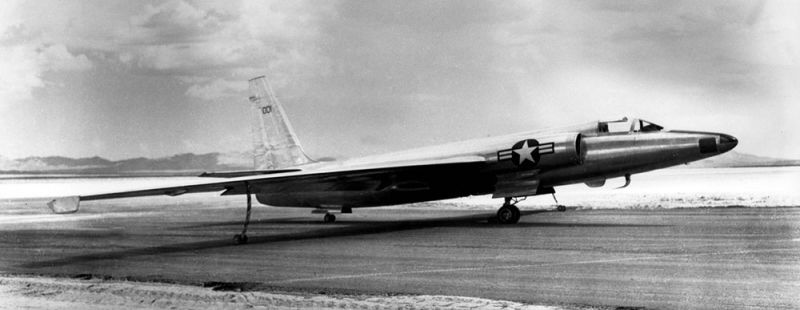
What the US sorely needed was an aircraft that could take reconnaissance photos of military installations, missile tests, or other high-value assets while flying high enough to be out of the reach of Soviet fighters, then return to have the images analyzed immediately. At the time, there was perhaps nobody better suited to tackle the job of creating such an aircraft than Kelly Johnson, head of Lockheed’s super-secret Skunk Works. The result of his work was the Lockheed U-2. With the U-2, Johnson and his team of engineers produced an aircraft that was capable of flying at 70,000 feet. Though the “Dragon Lady” was by no means a fast aircraft, its extreme operating altitude made it immune to interception by enemy fighters. But as Soviet antiaircraft missile technology improved, the US feared it was just a matter of time before one of their pilots was shot down.
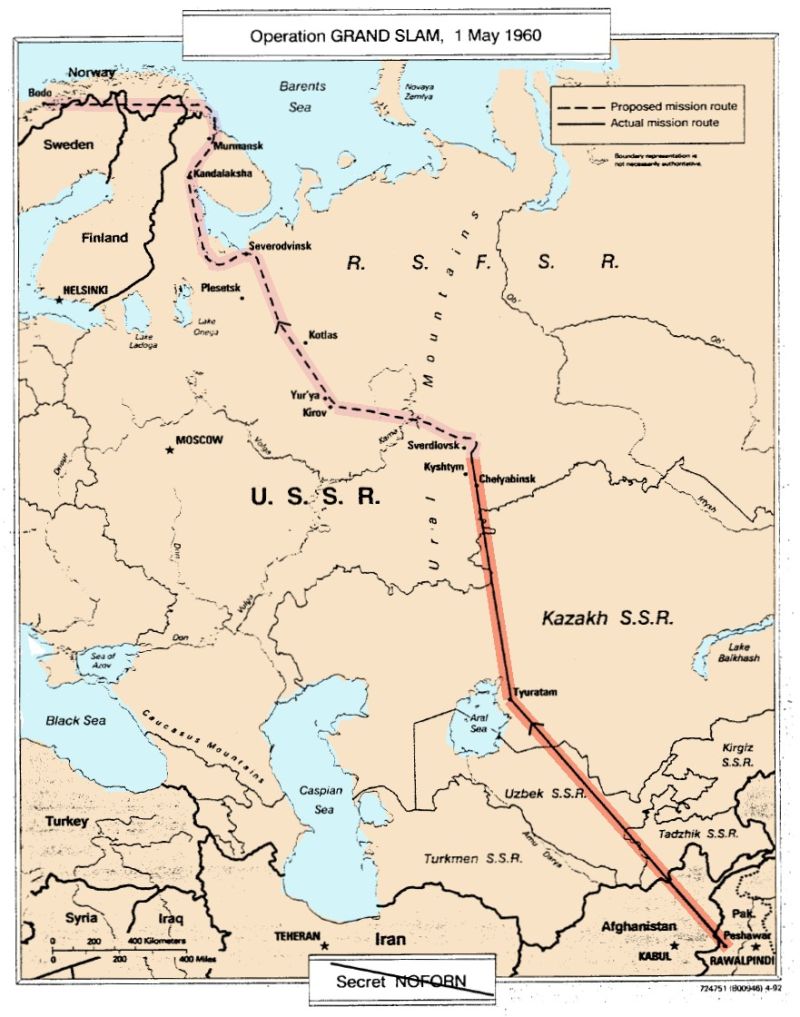
For three years, the U-2 flew undisturbed, but on May 1, 1960 CIA pilot Francis Gary Powers was shot down while on a spy mission over Russia. Powers took off from Pakistan and flew northward to photograph ICBM sites at the Baikonur Cosmodrome and the Plesetsk Cosmodrome. After photographing the sites, the flight plan dictated that Powers continue north and land in Norway. By now, these reconnaissance flights had become somewhat routine, and Powers was flying a predictable route. Soon after entering Soviet airspace north of Kazakhstan, his aircraft was detected near Chelyabinsk and fighters were sent to intercept it. Despite their best efforts, the fighters were unable to reach the spy plane at its extreme altitude. Next, the Soviets launched eight SA-2 Guideline missiles at Powers’ aircraft. One of the missiles destroyed at least one of the fighters sent to intercept the U-2, but another detonated directly behind the spy plane, peppering it with shrapnel. Powers ejected from his damaged aircraft, but the plane came to earth relatively intact. He was captured, but chose not to take the optional poison capsule that the CIA had given him.
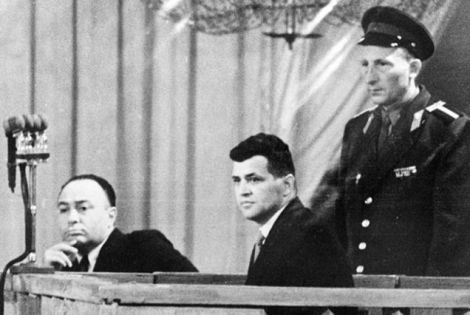
At first, the US denied that Powers was on a spy mission, and claimed that the unmarked U-2 was an errant weather plane that had accidentally flown off course. As part of the cover up, NASA released a detailed account to the media of how one of its research planes had flown off course, and other U-2s were hastily painted with NASA markings to lend credibility to the ruse. But the Soviets were not fooled, and the incident dealt another blow to already-brittle US-Soviet relations. Despite American attempts at obfuscation, the Eisenhower administration was forced to admit the true nature of the flight, and Powers pled guilty at what was essentially a propaganda show trial. He was convicted of espionage and received a sentence of ten years in prison, including seven years of hard labor. Ultimately, Powers served only 21 months of his sentence. On February 10, 1962, he was exchanged for KGB spy Rudolf Abel, who had been convicted for espionage in what was known as the Hollow Nickel Case.
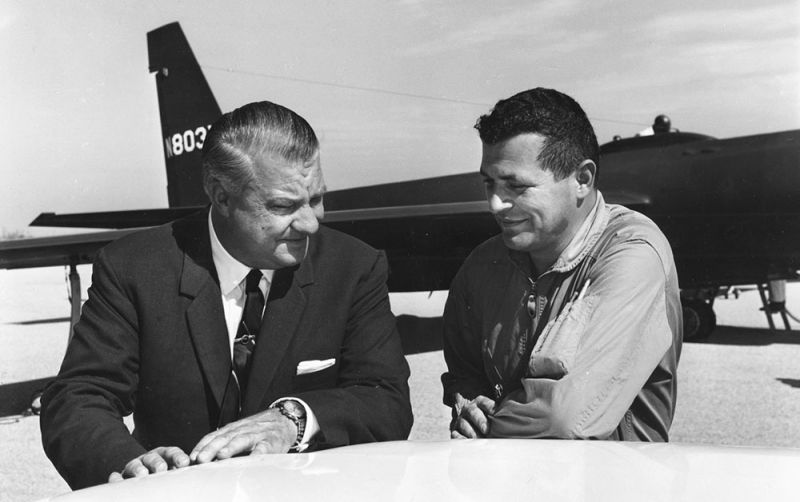
Following the incident, the US halted flights over the Soviet Union and accelerated its work on satellite reconnaissance. But the true legacy of the Powers incident was the CIA’s Oxcart program and the development of the Lockheed A-12 and Lockheed SR-71 Blackbird, aircraft whose combination of extreme altitude and Mach 3 speed made them capable of flying over enemy territory with complete impunity. Powers returned to the US and worked as a test pilot for Lockheed, though he remained on the CIA payroll. After leaving Lockheed, Powers worked as a helicopter pilot for a Los Angeles television station, and died in 1977 when his Bell 206 JetRanger ran out of fuel and crashed while covering a news a story.
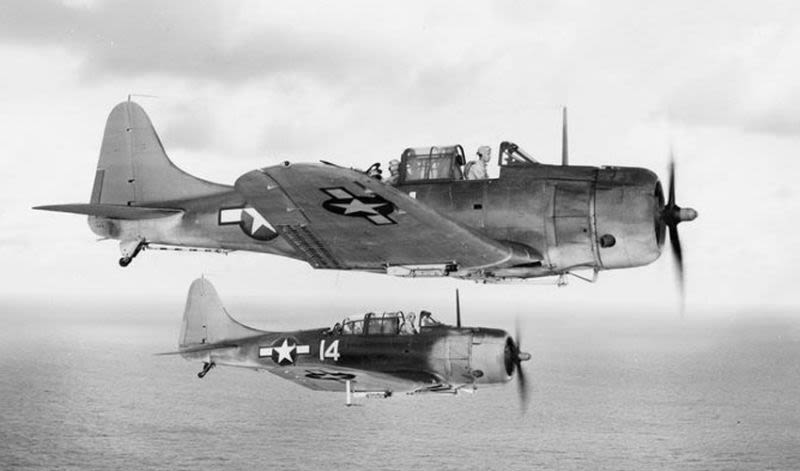
May 1, 1940 – The first flight of the Douglas SBD Dauntless. In the summer of 1921, US Army Air Service Brig. Gen. William “Billy” Mitchell carried out a series of tests to demonstrate his belief that air power alone could destroy ships at sea. Flying lumbering Martin NBS-1 bombers, with Royal Aircraft Factory S.E.5 fighters serving as dive bombers, Mitchell’s unit was successful in sinking the captured German battleship SMS Ostfriesland, though the results were controversial. The aircraft successfully sank the ship, but no direct hits were made by the large level bombers, and the Ostfriesland and other target ships were all lying at anchor and made no attempts to defend themselves. Nevertheless, Mitchell’s experiment proved the potential of air power against sea power, and it was the dedicated dive bomber that would turn the tide of battle in the Pacific during WWII.

The Douglas SBD Dauntless traces its lineage back to the Northrop BT, a two-seat, single-engine dive bomber developed for the US Navy that first flew in 1935. Diving headlong at a target is a dangerous business, and an innovative feature of the BT was its perforated spilt flaps which helped eliminate tail buffeting during dives. These innovative flaps became a trademark of the later Dauntless. When Northrop was taken over by Douglas Aircraft Company in 1937, work on Northrop projects continued. Famed aircraft designer Ed Heinemann took over development of the Dauntless, and the SBD (Scout Bomber Douglas) became the first in a long list of great warplanes that Heinemann helped to develop.
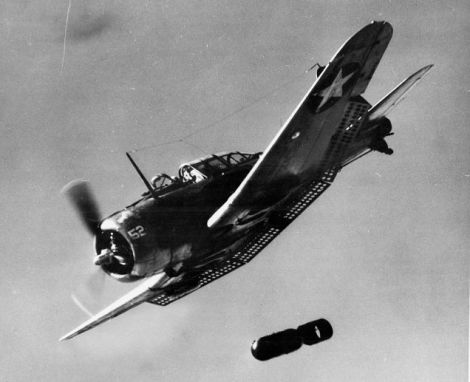
The first production models of the Dauntless were the SBD-1, which went into service with the US Navy, and the SBD-2, which served with the US Marine Corps. Both were powered by a 1,000 hp Wright Cyclone engine, and differed only in that the Marine Corps version had an increased fuel capacity and different armament. Development progressed to the SBD-3 in early 1941 with the addition of more armor plating to protect the crew, increased firepower from four machine guns, and self-sealing fuel tanks. But it was the SBD-5 that became the mainstay of the US Navy in the early years of the war. The most marked change in the SBD-5 was the inclusion of a more powerful Wright R-1820 Cyclone engine, the same engine that powered the Boeing B-17 Flying Fortress. The R-1820 boosted the SBD’s power up to 1,200 hp and gave it a top speed of 255 mph, though it remained 100 mph slower than the Japanese A6M Zero. In addition to its two rearward-firing .30 caliber defensive machine guns, the SBD-5 also featured two forward-firing .50 caliber machine guns which proved quite effective against more lightly built Japanese fighters.
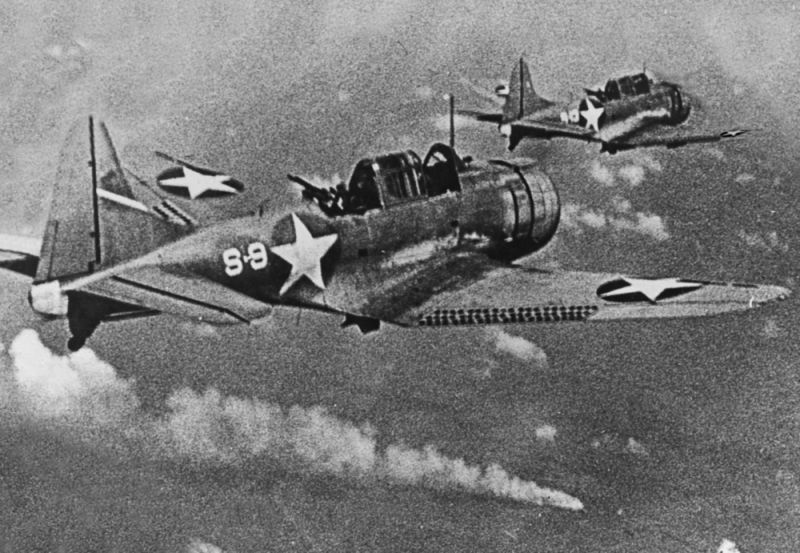
Following the Japanese attack on Pearl Harbor on December 7, 1941, the Dauntless went directly into battle, attacking Japanese positions throughout the Pacific Theater. The first significant contribution made by the Dauntless and her crews was in the Battle of the Coral Sea on May 4-8, 1942, when SBDs flying from the carriers Yorktown and Lexington sank the Japanese light carrier Shōhō and damaged the fleet carrier Zuikaku, which had taken part in the Pearl Harbor attack. The Battle of the Coral Sea was the first naval battle in history fought entirely by air, with no surface ships of the opposing navies ever sighting each other. While a tactical victory for the Japanese, the battle slowed their expansion north of Australia, and set the stage for the Battle of Midway one month later. During that pivotal battle, four squadrons of SBDs flying from the American carriers Yorktown, Hornet and Enterprise sank the Japanese fleet carriers Akagi, Kaga, Sōryū and Hiryū, all of which had taken part in the attack on Pearl Harbor. The Americans lost one carrier, but the balance of power in the Pacific, and the initiative, shifted decisively to the Americans.
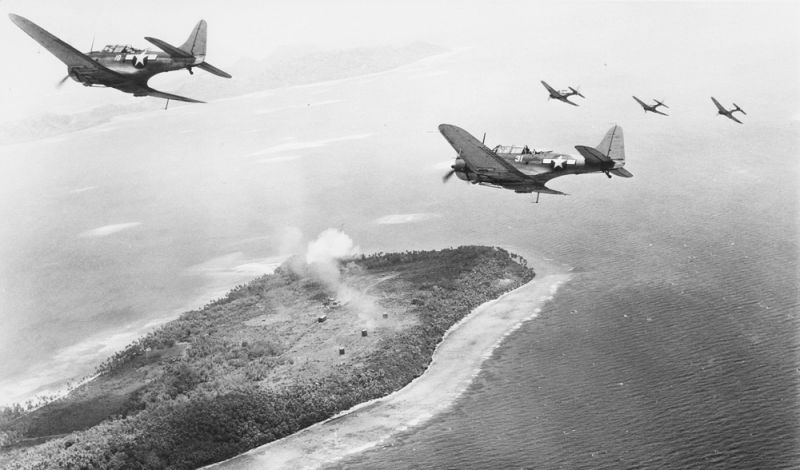
Though the Dauntless was meant to be replaced by the more powerful Curtiss SB2C Helldiver, the SBD soldiered on, and fought effectively throughout the Pacific War against both Japanese shipping and ground targets. The US Army evaluated a land-based version called the A-24 Banshee that was identical save for the removal of the tail hook and the inclusion of an inflated tail wheel, though it was not nearly as successful as the Dauntless. When production of the SBD and A-24 finished in 1944, nearly 6,000 aircraft had been built. Despite their exemplary service, the Dauntless had become obsolete, and they were quickly retired at the end of the war. Today, a number of aircraft are on display or undergoing restoration, while another six examples remain airworthy.
Short Takeoff
April 29, 2013 – The first powered flight of the Virgin Galactic SpaceShip Two, a suborbital spaceplane designed by Burt Rutan and built by Scaled Composites to carry tourists into space. SpaceShip Two is carried aloft by the White Knight Two mothership, then released to leave the atmosphere under rocket power. For paying passengers, the entire flight will last two-and-a-half hours, but tourists will only experience a few minutes of microgravity. On SpaceShip Two’s return to Earth, an innovative feathering system raises the tail structure to stabilize the craft during reentry, and then retracts before an unpowered landing. The space tourism concept was suspended following a crash of VSS Enterprise in 2014, and test flights resumed on May 1, 2017 with the second SpaceShip, VSS Unity, to evaluate a redesigned re-entry system.
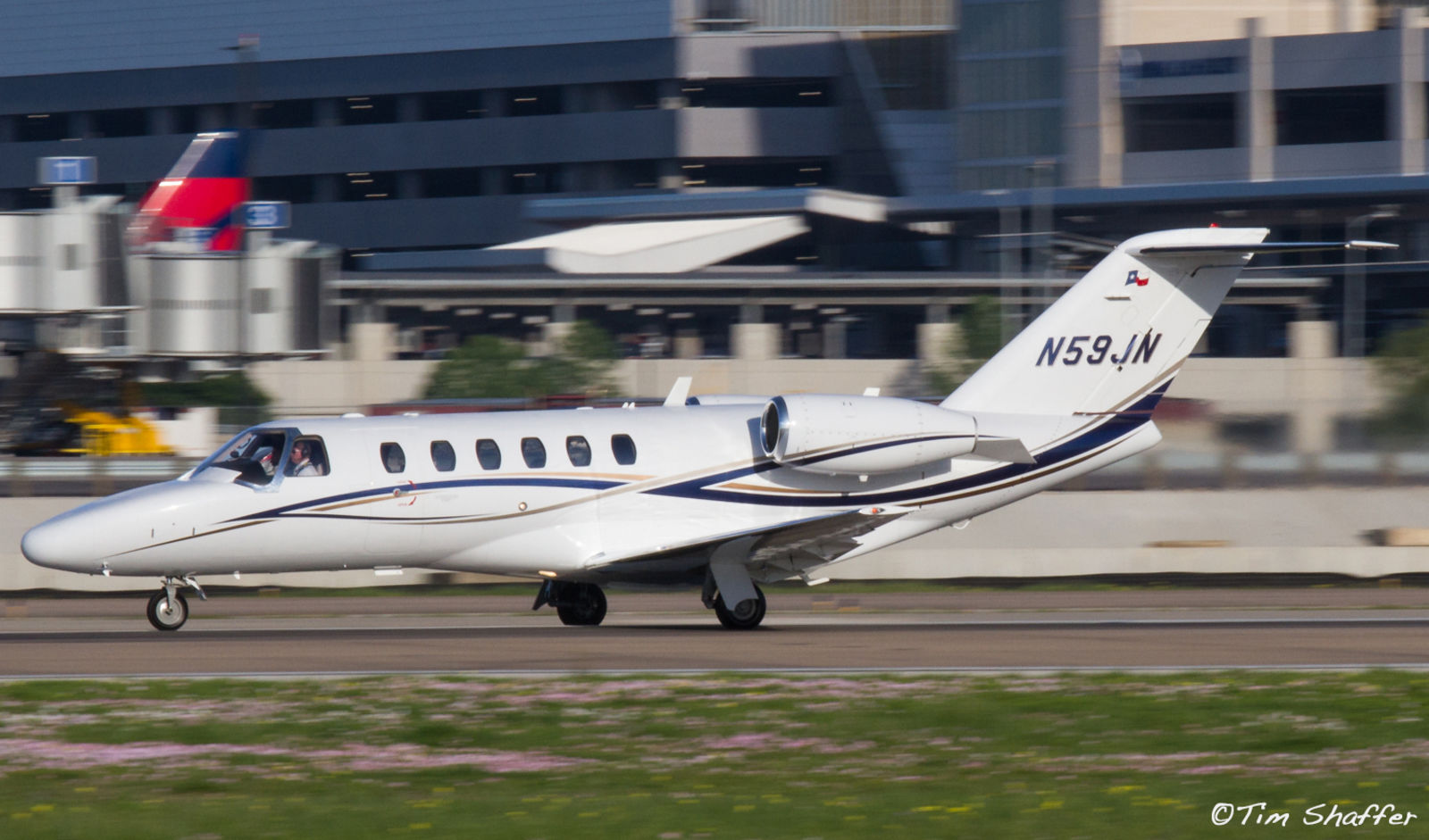
April 29, 1991 – The first flight of the Cessna CitationJet, a small, turbofan-powered corporate jet which formed the basis for a full line of models offering different engine and passenger accommodations. The CitationJet was originally developed as a replacement for the Citation and Citation I and offered a laminar flow wing and a T-tail configuration. Though the CitationJet is shorter than its predecessors, it offers increased cabin height through a lowered cabin center aisle. Depending on the variant, the CitationJet can carry from 3 to 9 passengers, and is rated for operation by a single pilot. A number of variants have increased passenger capacity, and the CitationJet remains in production. More than 1,800 of all variants have been built to date.
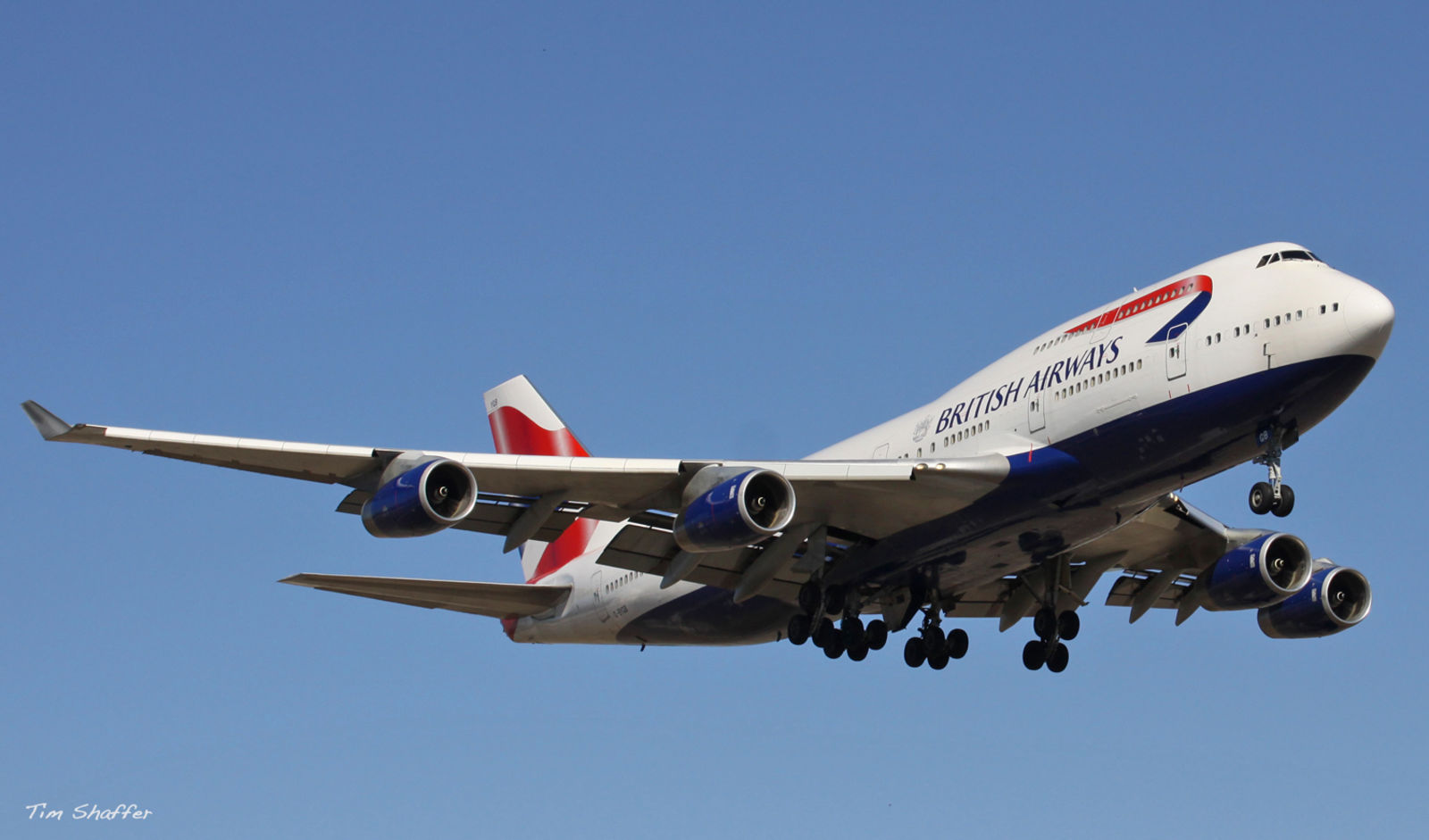
April 29, 1988 – The first flight of the Boeing 747-400, a development of the 747-300 and the variant that has been delivered in the greatest numbers. The 400 has an updated glass cockpit and can be flown by two pilots, eliminating the need for a flight engineer. The most recognizable feature of the 400 is the addition of 6-foot tall winglets for increased fuel efficiency, though these are not included in aircraft built for the Japanese domestic market. Boeing offered the 400 in five basic variants: passenger (-400), freighter (-400F), combi (-400M), domestic (-400D, with a shorter range and capacity for 624 passengers) and extended range (-400ER). Northwest Airlines was the launch customer for the 400, and a total of 694 of all variants have been delivered.
April 29, 1981 – The first flight of the Myasischev VM-T, a variant of the Myasischev M-4 Molot bomber that was repurposed for strategic airlift and the transportation of extremely large loads. The VM-T is capable of carrying loads in excess of 55 tons, and was originally developed to transport rocket boosters and other large components to the Baikonur Cosmodrome in Kazakhstan for the Russian space program. A large, external cargo pod was added, and the vertical stabilizer of the Molot was removed and replaced by a pair of endplane tail fins. The VM-T was also used to transport the Russian space shuttle Buran. Two VM-Ts were built, and they were eventually replaced by the larger Antonov An-225 Mriya.
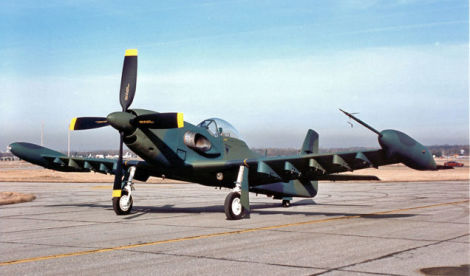
April 29, 1971 – The first flight of the Piper PA-48 Enforcer. Designed as a low-cost counter-insurgency (COIN) platform, the original Enforcer was developed from the Cavalier Mustang, the civilian version of the WWII North American P-51 Mustang, and powered by a turboprop engine. Though the aircraft performed well, neither the Air Force nor any foreign air forces showed any interest at the time. The program was resurrected in 1979 when Congress allocated money to build two more prototypes of a more advanced version, one that now shared only 10% of the original Mustang airframe. Again, the Air Force chose not to adopt the aircraft. Two of the four prototypes remain, one at the Air Force Flight Test Museum at Edwards AFB, and the other at the National Museum of the Air Force near Dayton, Ohio.
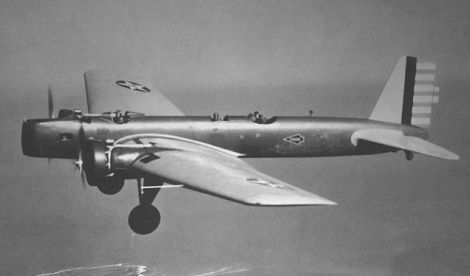
April 29, 1931 – The first flight of the Boeing YB-9, a Boeing-funded development of their Model 200 Monomail single-engine commercial aircraft and the first all-metal cantilever monoplane bomber built for the US Army Air Corps. Powered but a pair of Pratt & Whitney R-1860 Hornet B radial engines, the YB-9 had a top speed of 188 mph, equal to or better than contemporary fighter aircraft. Boeing built two test and five production aircraft (Y1B-9A), but lost the competition for a production contract to the Glenn L. Martin Company, which offered the more advanced Martin XB-907 which entered service in 1934 as the Martin B-10.
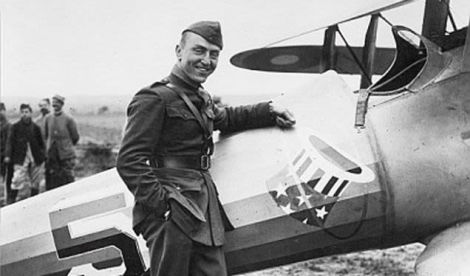
April 29, 1918 – American ace Eddie Rickenbacker scores his first victory. Rickenbacker was America’s leading ace in WWI and a recipient of the Congressional Medal of Honor. He served in the 94th Aero Squadron, nicknamed the “Hat-in-the-Ring” squadron, where he flew French-made Nieuport 28 and SPAD S.XIII fighters. Rickenbacker eventually commanded the 94th, and finished WWI with 26 confirmed victories. After the war, he started the ill-fated Rickenbacker Motor Company in 1920, but made his greatest contribution to aviation as the head of Eastern Air Lines from 1938 until his retirement in 1963. Rickenbacker died of a stroke in 1973.
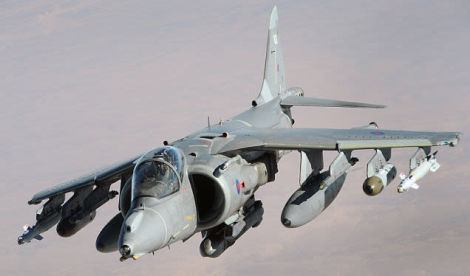
April 30, 1985 – The first flight of the British Aerospace Harrier II, the second-generation development of the McDonnell Douglas AV-8B Harrier II, itself a derivative of the Hawker Siddeley Harrier. Provided with a more powerful engine, an improved wing, and upgraded avionics, the Harrier II was operated by both the Royal Air Force and Royal Navy, and saw service in Kosovo, Iraq and Afghanistan, where it flew air interdiction and close air support missions. Due to budget shortfalls, a controversial decision was taken by the British government to retire the Harrier II in December of 2010 with no immediate successor in place. The Harrier II’s mission eventually will be taken over by the Lockheed Martin F-35B Lightning II, which will operate from two new Queen Elizabeth-class carriers scheduled for activation by 2020.
April 30, 1958 – The first flight of the Blackburn Buccaneer, a low-level, subsonic, carrier-based attack aircraft developed by the Royal Navy to counter the threat posed by Soviet Sverdlov-class cruisers. With a crew of two and a top speed of 667 mph, the Buccaneer could carry up to 12,000 pounds of either conventional or nuclear weapons and entered service in 1962. It saw action with the South African Air Force during the South African Border War, and in the Gulf War, where Buccaneers flew as target designator aircraft for the Panavia Tornado. The Buccaneer was retired from service in 1994 and replaced by the Tornado in the RAF and by the British Aerospace Sea Harrier in the Royal Navy.

April 30, 1926 – The death of Bessie Coleman. Coleman was born on January 26, 1892 in Atlanta, Texas. She was the first woman of African American descent to become a pilot, and also the first woman of Native American descent to hold a pilot’s license. Coleman developed an interest in flying after WWI but, since no American flight instructors would agree to train her, she received her training and pilot license in France in 1920. After her return to the US, Coleman flew on the barnstorming circuit and planned to establish a flight school for African American women, but was killed during a reconnaissance flight for a parachute display. With her mechanic at the controls, Coleman, who was not wearing a seat belt and did not have a parachute, was thrown from the cockpit following an unexpected dive.
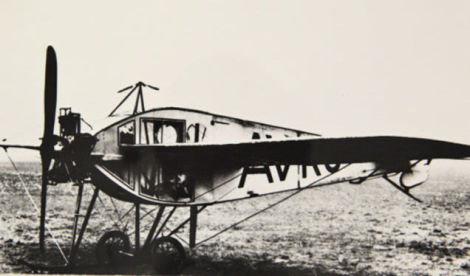
May 1, 1912 – The first flight of the Avro Type F. Though only one was ever built, the Type F is notable as the world’s first aircraft to feature an enclosed cabin as part of the design. The diminutive aircraft had room for just one pilot, who entered through an aluminum sheet metal trapdoor in the top of the fuselage. The Type F also had circular holes in the side windows so the pilot could stick his head out in case the windscreen became fouled by oil. The wire-braced monoplane made a number of test flights, but was eventually damaged beyond repair four months after its maiden fight. It’s Viale 35 hp radial engine is on display at the Science Museum in London, and its rudder belongs to the Royal Aero Club.
Connecting Flights
If you enjoy these Aviation History posts, please let me know in the comments. You can find more posts about aviation history, aviators, and aviation oddities at Wingspan.
